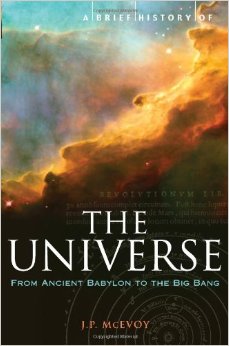
Comments: What is the truth?
Once you eliminate the impossible, whatever remains, no matter how improbable, must be the truth.
— Arthur Conan Doyle
Notes:
- Ptolemy’s universe
- As the heavens were generally thought to be the home of the gods, Babylonians tried to read their destiny in unusual celestial happenings.
- The date of 26 February 747 BC also marked an important beginning in the history of astronomy, because from this date, highly accurate astronomical observations by the Chaldeans were kept on a regular basis until after the birth of Christ.
- The most important achievement of this entire early period from the standpoint of the history of science was the Babylonian solution to the problem of the motion of the Sun and the Moon. It was their custom to designate the day after the new Moon as the beginning of each month, that is, when the lunar crescent first appeared after sunset. Originally, this day was determined by observation, but later they wanted to calculate it in advance – that is to say, to make a calendar.
- Thereafter, classical astrology gave a naturalistic rationale for natal horoscopes, marking the split between astrology as ‘divination’ (Babylonian) and astrology as ‘science’ (Greek). The latter eventually split off and grew into what today is recognized as the science of astronomy.
- A great philosopher Aristotle may have been, but as a physicist or cosmologist he relied too much on an a priori approach to the natural world, relying on intuition rather than insisting on testing nature with observation and experiments.
- Euclid’s method of proving mathematical theorems by logical deduction from accepted principles remains the backbone of all mathematics.
- Aristarchus was certainly both a mathematician and astronomer and is celebrated as the first to propose a Sun-centred universe.
- Aristarchus’ heliocentric system could explain retrograde motion

- Aristarchus’ heliocentric system could explain retrograde motion
- The heliocentric idea of Aristarchus was forgotten and western thought about heliocentrism stagnated for almost two thousand years.
- Ptolemy proposed that the Earth could be off-centre in a eccentric position.
- Ptolemy made use of epicycle to describe changes as drastic as the retrograde motion of planets

- He believed that the planets and Sun orbit the Earth in the following order: Mercury, Venus, Sun, Mars, Jupiter, Saturn. — the Ptolemaic system.
- There exists a span of approximately fourteen centuries when nothing happened to further the understanding of the movement of bodies in the heavens.
- From the death of Ptolemy until the birth of Copernicus in 1473 there exists in the West no more than a dozen new records of accurate planetary positions.
- Newton’s universe
- Copernicus considered the study of the heavens to be a hobby and dabbled for forty years developing his own Sun-centred geometric system of the world.
- Copernicus postulated that if the Sun is assumed to be at rest and the Earth is assumed to be in motion, then the remaining planets fall into an orderly relationship.
- It is not an overstatement to suggest that the primacy of observations over theory that has characterized science for four hundred years began with Tycho in 1563.
- In concert with his protégé Kepler, Tycho started the new physics of the sky based on observation and instrumentation rather than theory.
- From Magister Maestlin’s initial lectures on the various world systems, Kepler seemed to instinctively glean that Copernicus was right. The beauty and simplicity of the heliocentric model appealed to his aesthetic sense of how God had made the universe.
- Kepler’s model of the universe

- Kepler’s law of planetary motion
- law of ellipses
- area law: swept through equal areas in equal time periods
- the ratio of the average distance of each planet from the Sun, cubed, to the period of revolution for each planet, squared, is the same constant value
- Galileo’s studies were innovative in his insistence on applying concepts and mathematics to strictly observed facts that could be tested.
- Galileo’s work
- free fall hypothesis
- inertia
- relative motion
- telescope
- Newton postulated instead that light is complex and heterogeneous and that colours arise when this heterogeneous mixture is broken down into its simple components.
- Newton’s work
- De Motu (On motion)
- Philosophiae naturalis Principia Mathematica (The mathematical priciples of Natural Philosophy)
- Spectroscopy lead the way to a more complete examination of the universe: stars, nebulae and galaxies.
- Einstein’s universe
- Einstein found that matter tells space how to curve and then space tells matter how to move.
- Einstein ultimately conceptualized the universe as the totality of events in space and time – and put forth one set of equations to describe this totality.
- Gravity was not caused by the attraction of one body for another, said Einstein, but fundamentally by the distortion of space by mass.
- Einstein suggested a remarkable astronomical experiment, which could only take place during a total eclipse of the sun.

- The two seminal discoveries of 1912: Cepheid variable stars by Henrietta Leavitt and red-shift of nebulae by Vesto M. Slipher.
- The studies of globular clusters would enable Shapley to complete what was to become his greatest single contribution to science: the discovery of the dimensions of our galaxy, the Milky Way, and of the location of its centre.
- Hubble confirmed that not only is the universe expanding continuously, but that it is expanding uniformly.
- Hubble’s law: V (velocity) = H (Hubble constant) x D (distance)
